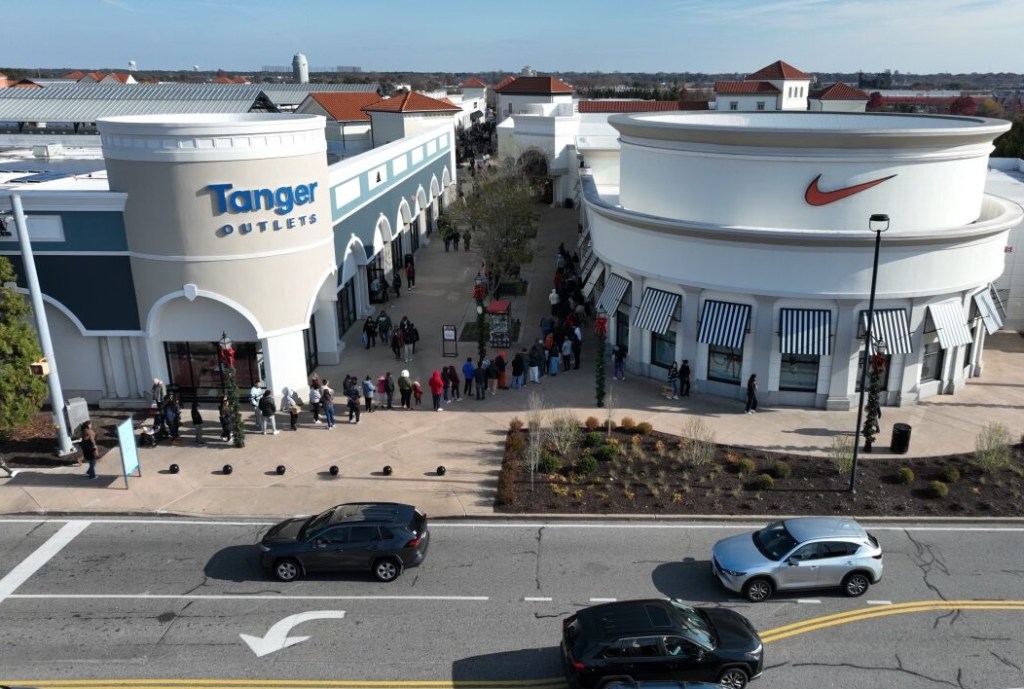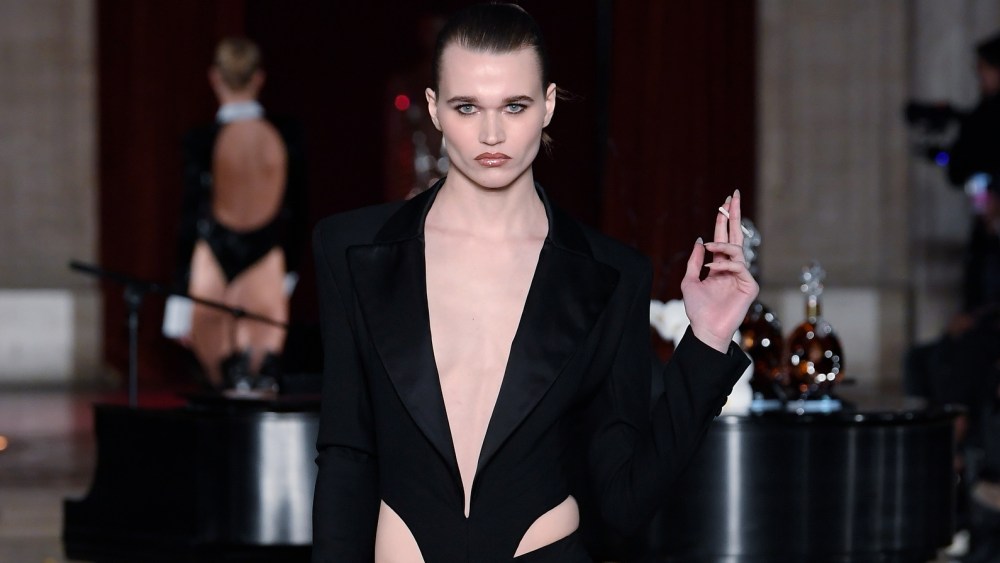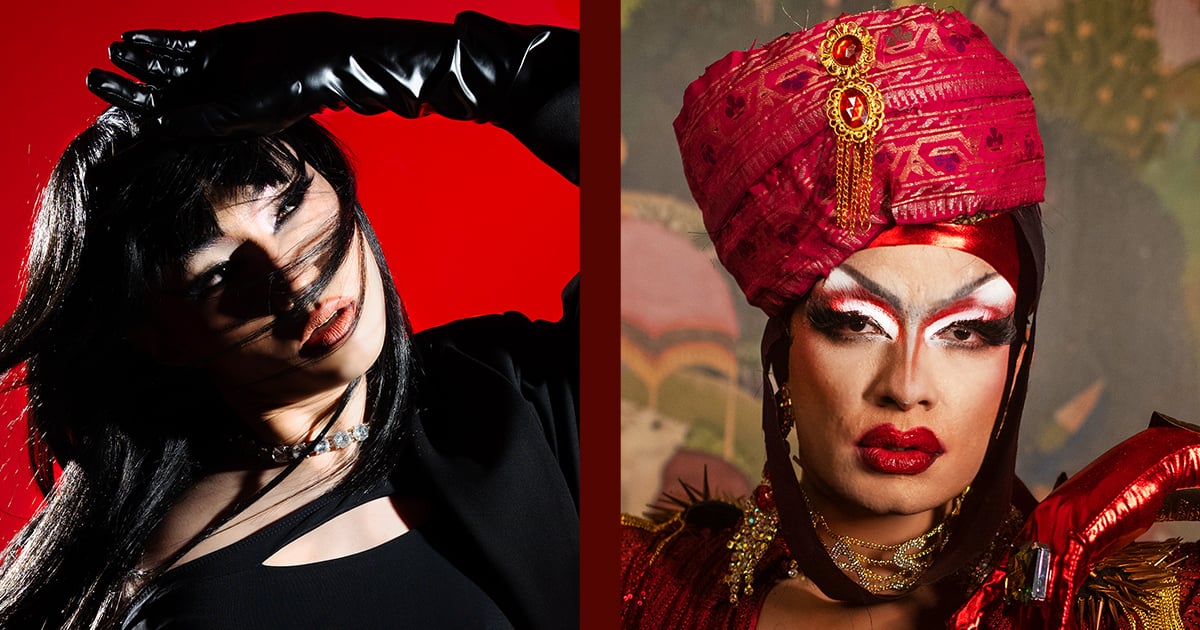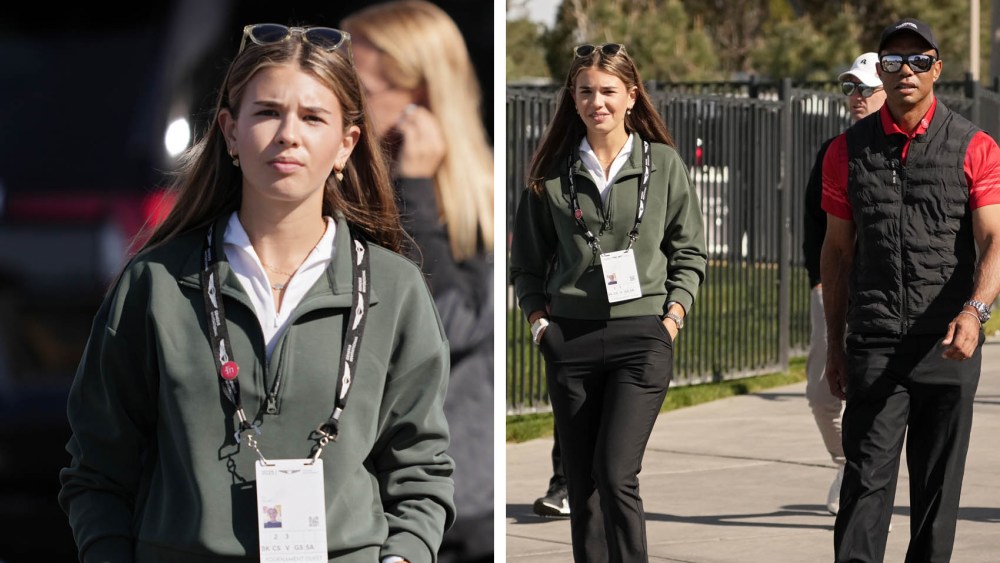It’s another season of mood swings for retailers.
Black Friday weekend saw heady online gains and an OK turnout at stores, putting retail executives on a temporary high. Yet while consumers responded to the barrage of price promoting over the past week — with dry and cooler weather encouraging them to get out and buy gifts and winter styles — after Cyber Monday retailers anticipate a serious lull in business until about 10 days before Christmas.
Industrywide, caution over the overall holiday outlook remains and nobody is ready to revise the conservative forecasts for fourth-quarter low-single-digit revenue increases or declines, despite last weekend’s outcome.
As Jeff Gennette, the outgoing chairman and chief executive officer of Macy’s Inc., told WWD on Black Friday, “It was a solid start to the holiday season, but as you know, the first couple of hours don’t predict what we’ll do for the weekend or for the season.” Asked about the mood of shoppers, Gennette replied: “Hard to tell. The customer is under pressure. It’s a very competitive environment. Everyone recognizes customers are looking for great value.”

“Interestingly for us, we exceeded expectations for stores. They led the way,” said Marc Rosen, CEO of JCPenney, which offered doorbusters, coupons and surprise gifts at its stores, including one $500 off coupon for one customer per store. There was also a 9 a.m. gift card promotion offering a $10 coupon for a $50 gift card purchase, among other promotions.
“The customer is looking for value more than ever and really responded to deals, promotions and great value,” Rosen said. “We leaned into that and said we’re going to take inflation out of the holidays. We had hundreds of items at the same or lower prices than last year, and thousands of gift items under $15. We’ll continue to offer promotions through the holiday season as customers look for more value. Our customer, who has a median income of $75,000, is stretched right now.”
On the other side of the price spectrum, Mytheresa, the luxury fashion e-tailer, “saw a clear uplift in sales as consumers strongly reacted to special offers,” said Heather Kaminetsky, North America president. “However, since the beginning of October the market has been already promotional so shoppers have been spoiled for a few weeks now.”
One industry CEO, who requested anonymity, said, “The fall/winter season will continue to be very difficult in the U.S. There is still too much stock in the market and too many players revert to heavy discounting to get through.”
“Because Thanksgiving was pulled forward to Nov. 23 means retailers will have a December lull that actually starts in November on Tuesday the 28th, and extends right into the second week of December. It will be a deep lull, really taking what had been a perfectly decent Black Friday weekend to the overall season slowing as December unfolds,” observed Craig Johnson, president of Customer Growth Partners.
Bob Mitchell, co-CEO of Mitchell Stores, said that while the holiday season appears to be off to a solid start, he’s not ready to deem it a success. “We’re very cautious at this point. We were running down for November and we had a couple of strong days, but there’s so much still to come. We’re not promoting at all but we’re feeling the effects of promoting by others.”

According to Mastercard SpendingPulse, which measures in-store and online retail sales across all forms of payment, U.S. retail sales on Friday rose 2.5 percent year-over-year excluding automotive, and not adjusted for inflation. Mastercard reported e-commerce sales remained strong, increasing 8.5 percent year-over-year, as consumers shopped deals online and sporting events airing Friday, including the first-ever Black Friday NFL pro-football game, made online shopping appealing for game day. Meanwhile, while in-store traffic was good, Mastercard said in-store sales increased just 1.1 percent.
“I would not read a lot into one day of sales,” said Steve Sadove, senior adviser for Mastercard and former chairman and CEO of Saks Inc. “The sales were very consistent to the expectations for the season of up 3.7 percent — roughly at the rate of inflation — which came on top of the 6.7 percent sales gain last year. It’s a healthy forecast. Inflation has come down from a high in the 7 percent range, to a 3 to 4 percent range.”
Sadove also pointed out that the 8.5 percent gain in e-commerce was similar to pre-pandemic online increases.
“The revenue side is only one part of the story,” Sadove said. “Margins and promotions are the other part. Holiday promotions started early, in October, and there was a big jump in promotions on Black Friday and this weekend, but I would characterize promotions as generally planned, well controlled and with consumers responding. The question is what happens toward the end of season.”
Stephen Yalof, CEO of Tanger Outlets, told WWD, “Anecdotally, the trend that we saw was up 3 percent-ish. Retailers raising their hands said they had the best Black Friday in years. The athletic fitness brands are winning. Apparel and footwear brands that were promotional did well, too. People were looking to stretch their dollars in our shopping centers. Traffic continued to build all day Friday, and Saturday was a great day, too,” though less busy than Friday.
“The weather really helped. It was dry and sunny. At all of our famous brands there was plenty of action,” Yalof said, citing Nike, Polo Ralph Lauren and Coach, among others. “Inventory levels are good and stores that need to will continue to stock, and it will be progressively more promotional” as the season goes on, Yalof said. He said outlets at Tanger centers are 15 to 25 percent more promotional than traditional full-price stores.
“There has been a lot of concern that consumers are pulling back, but this past Black Friday felt like a traditional Black Friday. That was reassuring,” said Stephen Lebovitz, CEO of CBL Properties. “Most stores said they were beating their goals and beating 2022 with traffic higher. The promotions and doorbusters were really popular. There was strong traffic and buying, but there is still a long way to go before the end of the season.”

RetailNext, the in-store traffic analytics provider used by hundreds of retail brands, reported that on Black Friday itself, retailers saw a pop in foot traffic of 2 percent, with health and beauty brands seeing the most significant increase with a 13 percent jump, followed by jewelry brands, which experienced a nearly 7 percent jump. Retailers, on average, saw a 1.6 percent increase on Black Friday and the next day.
“Retailers were much more aggressive in the online space,” commented Marshal Cohen, chief retail adviser for Circana, which researches consumer behavior and consults with retailers and brands. “Shopping was prominent in stores, but not necessarily purchasing. There was an absence of self gifting that causes a 4 percent decline, even more in apparel stores. It’s really important to get that in-store impulse shopping. It didn’t happen Black Friday or Saturday. Stores were moderately busy, by 10 a.m. saw a lot of traffic, but not a lot of purchasing. Consumers were figuring out what to do for holiday. Online was definitely more promotional.
“I call this a complex Christmas,” Cohen added, noting the favorable calendar with three weekends for holiday shopping ahead with Christmas falling on a Monday, as well as economic challenges and the absence of creative product. “You can’t read into a Black Friday weekend. Retailers will get very nervous in the next two weeks when it gets very quiet. Then the frenzy starts. Twelve percent of consumers say they will shop later. Consumers don’t have a sense of urgency. Inventories are not low. There’s plenty of stuff. It’s a laissez-faire, ho-hum Christmas.”
Companies that track the billions of clicks and swipes that mark the beginning of the holiday sales season saw early momentum that ultimately helped carry the day.
Criteo, a commerce media company, indicated that the tone was set in the morning with transactions up 25.9 percent between 9 and 10 a.m. EST “showing that engagement occurred earlier in the day than usual.”
The e-commerce platform Shopify reported it saw $4.2 million in sales per minute at 12:01 p.m. EST, leading to $4.1 billion in Black Friday sales globally, a 22 percent increase. Shopify’s top five product categories were clothing, personal care, jewelry, shoes and decor while the top trending products included Skims cotton rib tanks and Snocks boxer shorts.
Overall, it was a good day of digital shopping.
Adobe Analytics said online sales hit a record $9.8 billion on Black Friday in the U.S., a gain of 7.5 percent from a year earlier.
Compared with pre-holiday sales in October, smartwatch sales were up 577 percent, TVs gained 484 percent, and audio equipment rose 376 percent. Apparel overall gained 136 percent and jewelry was up 114 percent. To fund the purchases, many shoppers turned to buy now, pay later.
The question is just how long that spending surge will last.
Adobe, at least, expects it to last a little longer with sales for Friday and Saturday projected to total $10 billion combined. And Cyber Monday is set to rise 5.4 percent to $12 billion to be the biggest one-day haul of the year for merchants online.
All together, Adobe sees the five days from Thanksgiving through Cyber Monday logging sales of $37.2 billion, a 5.4 percent gain that accounts for 16.8 percent of the full holiday season.
“Black Friday reasserted its dominance this season,” Vivek Pandya, lead analyst, Adobe Digital Insights, said in a statement. “The decline in online prices over the last year has created a favorable environment for consumers with strong discounts this season that are tempting even the most price-conscious consumers.”
Inna Kuznetsova, CEO of ToolsGroup, which specializes in retail and supply chain planning, said, “For the last six months, the journey for a lot of retailers has been a race between reducing inventory and declining ability of customers to buy. There is high pressure on disposable income. Customers continue to shop but have become much more picky and selective and have started hunting bargains much more deeply than before.”
Asked about the state of holiday inventories, Kuznetsova said, “It strongly depends on the retailer.” Many still have excessive inventory; others implementing AI-optimization technology enabling a “granular” approach to promotions and markdowns are in good shape, she said. Retailers displaying wide 65 to 70 percent off promotions have apparently had difficulty moving merchandise, she added. With jeans, for example, retailers need to get granular in pricing, with the trend moving away from white and slim-fit styles, to wider fits and darker colors. It’s a matter of adjusting not just by category but by stock keeping unit, size and location within each category, Kuznetsova said.
“Call it a B-plus Black Friday weekend overall, after starting a little slow,” said Johnson of Customer Growth Partners. “The stronger got stronger and the weak got weaker. Best Buy, Lululemon and Dick’s continue to dominate their sectors. More commodity players, some apparel and department stores…were having a hard time getting much traction, and some players are not doing well at all.
“The caveat is one decent weekend does not a season make. You don’t want to extrapolate from these three or four days on the balance of the season,” Johnson said.
Key factors on the season, as the retail expert sees it, include real income running flat to slightly negative; people generally getting into “an asset-light strategy and not looking to buy a bunch of stuff,” and Boomers and Gen Xers creating wish lists almost entirely experience-based and devoid of buying something.

Evan Gold, executive vice president of Planalytics Inc., which uses weather forecasting to help retailers plan their business, said last weekend was the coldest Black Friday weekend in 10 years, but it was also the predominantly dry weather that sparked sales of coats, sweaters, hats and hot foods and drinks. “It was great for traffic.”
Looking ahead, the weather should continue to facilitate sales of cold weather clothing and gear. Gold said this week in the Northeast, temperatures will be in the upper 30s to low 50s, which is colder than last year; the Great Lake region will be in the upper 20s to low 40s, and also colder than last year; while the South will also be colder than last year. “The only place that might be warmer is the Northwest. The Southwest should be similar to last year or slightly colder,” Gold said.
Ken Ohashi, CEO of Brooks Brothers, said Friday’s business was “really strong — above our expectations. We were up over last year and above plan.” Factory outlet stores continued to do well, full-priced mall stores experienced a rebound over the weekend while the online business performed as expected. “The real winner was the mall stores,” Ohashi said.
Fashion products led the way. “The customers had obviously been replenishing over the past couple of years, but now they want fashion,” he said. Specifically, cashmere and merino sweaters and novelty items were winners. But also womenswear was up in the double digits, he added, thanks to the recent addition of some new talent to the team. “That’s been a big focus for Michael [Bastian, Brooks’ creative director] and it’s paying dividends.”
Looking ahead, Ohashi said there’s “always a lull following Thanksgiving, but there is an extra weekend this year and we’ve had a great year so far. We want to end the year strong.”
Ken Giddon, president of Rothmans men’s stores in New York, said, “It was surprisingly good, especially when you turn on the TV and all you hear is bad news. We were bracing for that, but maybe our customer was not as affected by the macroeconomic factors as the general population. It’s been a rough month politically, but after a while, people get weary and want to enjoy themselves and buy new clothes.”
He said business was good at both the brick-and-mortar locations as well as online, thanks in part to the cold snap that hit the New York area over the weekend. “Cold and sunny is good for selling hats, gloves, sweaters and outerwear,” he said. Although suits were not as strong as sportswear, the post-pandemic wedding rush continued to spur business. Other top sellers included Brax pants and Fradi jackets along with Jack Victor sportswear and the Billy Reid collection.
Looking ahead, Giddon is hopeful the strength of this weekend continues. “I think we’ll still be on track,” he said. “People just have to pay less attention to what they’re hearing and more to what they’re doing. And we as retailers just have to keep our eye on the ball and keep doing what we do best.”
Mitchell pointed out sales over the Thanksgiving weekend were good though not “super busy” since Mitchells, which operates eight stores on the East and West Coasts, is not promotional. Even so, sales were running ahead of last year with strength in women’s ready-to-wear as well as men’s sportswear and provided a boost to what he termed “a lackluster November” until now. “So there was definitely some gift-giving,” he said. Top brands included Zegna, Loro Piana and Canali in men’s and Brunello Cucinelli, Loro Piana and Akris in women’s. One slower category was jewelry.
Mitchell said that while the holiday season appears to be off to a solid start, he’s still not ready to deem it a success. “We’re very cautious at this point,” he said. “We were running down for November and we had a couple of strong days, but there’s so much still to come. We’re not promoting at all but we’re feeling the effects of promoting by others.”
Macy’s reported that its top categories and brands for Black Friday and Saturday were fragrance, prestige cosmetics, handbags, fine jewelry, men’s active and women’s coats. Top-selling brands included Lancôme, Estée Lauder, Clinique, Ugg, Michael Kors, Coach, I.N.C., Nike, Levi’s and Dyson.
Lebovitz at CBL Properties cited jewelry, shoes, apparel and cosmetics as yielding the best results.
“Holiday prices are expected to rise just 0.5 percent this year, following blistering retail inflation of 6.1 percent in 2022,” S&P Global Market Intelligence reported. “Real holiday retail sales are expected to rise almost 3 percent in 2023, near the pre-pandemic average of 3.2 percent, signaling a welcome return to ‘real’ sales growth after falling flat last year.” S&P also reported that “slowing inflation and strong growth of GDP are set to keep labor markets tight, wages growing and consumers spending in 2023.”
2023 Holiday Trends
Retailers launch holiday campaigns early, as far back as October, stretching the season.
Consumers pickier than ever in selecting gifts; less inclined to self-purchase.
Gift cards, toys, beauty, cashmere top gift selections.
Walmart, Ulta, T.J. Maxx, Disney and Barbie products, food and beverage, draw much shopper attention.
Luxury gets promotional.
Black Friday online traffic healthy, store traffic decent and tame versus past years.
Retailers expect low-single-digit gains, holiday gains overall, around 3 percent.
— With contributions from Jean E. Palmieri and Evan Clark



